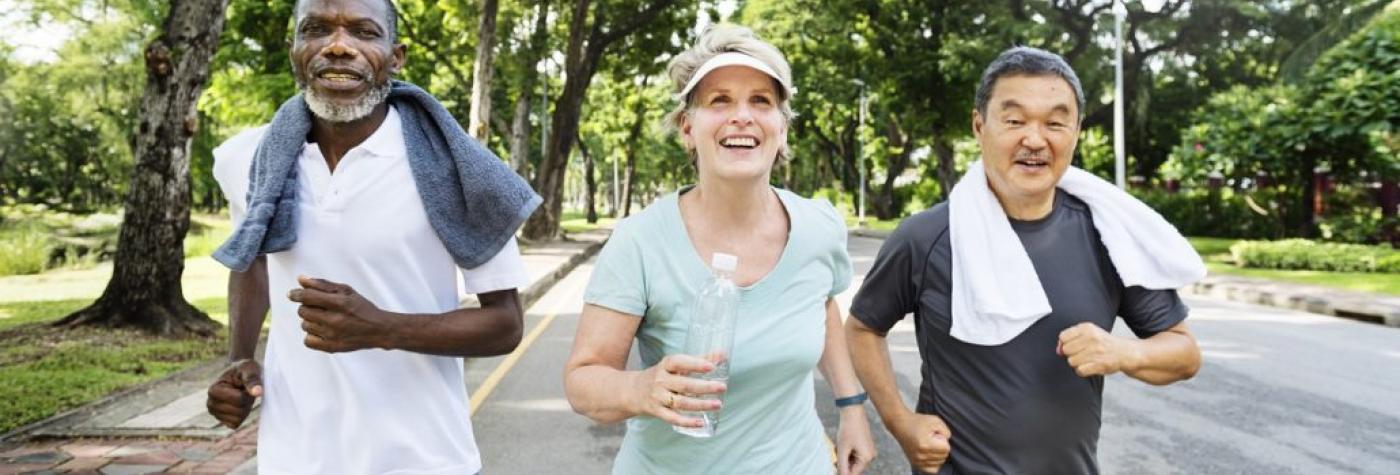Exercise for Good Health
Because exercise helps prevent or control a host of chronic health problems, it’s a crucial component of good health.
Most of us already know that exercise is beneficial, but it’s easy to get distracted. Advertising that focuses on images of young people who are already fit can make “working out” look like an activity only for the elite. Then there’s the bewildering array of equipment, clothing and programs that promise instant results.
Amid all the choices and background noise, many of us are left asking the most basic question: “Where do I start?”
The answer is encouraging: Anywhere.
Start with a little bit of something simple, and the benefits will add up right away. Keep these three things in mind:
- Some exercise is better than none.
- Don’t worry if you need to start slowly.
- Aim for gradual improvement.
General guidelines
For adults ages 18 to 64, the federal Office of Disease Prevention and Health Promotion recommends 2½ hours a week of moderate-intensity aerobic activity, or an hour and 15 minutes a week of vigorous activity.
For best results, spread the activity over three days each week.
“Aerobic activity” is any exercise that involves the large muscle groups of the body (especially the legs).
Moderate aerobic activity can be something as simple as walking briskly or gardening. Doubles tennis, bicycling at an easy pace, water aerobics and ballroom dancing also fall under this category.
Vigorous aerobic activity means fast walking; jogging; or running; jumping rope; bicycling 10 or mph or faster; gardening that involves digging; and swimming laps.
Under these guidelines, a person’s exercise plan might look like one of these options:
- Walk a half an hour a day, five days a week.
- Jog about 25 minutes a day, three days a week.
Exercise equipment is nice, and a health club membership is fine, but they aren’t necessary.
About starting slowly
What if none of what’s described in the general guidelines is realistic for you? Start where you are and build from there, using the government’s guidelines as a goal rather than a plan.
For some people, it’s an effort to walk out to the mailbox and back. Try to do that once a day. Then try to do it twice a day. After that gets easier, try for three times a day.
No matter where you start, go for small, gradual improvements. Your plan will be unique to you. The only thing that matters is that you get started and stick with it. Why? Because it’s worth it.
Benefits of exercise
If you exercise, chances are you will feel better about yourself and your situation in life. You will increase your ability to perform everyday tasks. And you will likely find that you sleep better.
Also, your overall health will increase. The Centers for Disease Control and Prevention lists numerous links between physical activity and health. Those who exercise regularly:
- Have an easier time maintaining or losing weight.
- Reduce the risk of heart disease, stroke, type 2 diabetes, and some cancers, including breast, colon and lung cancer.
- Reduce the risk of hip fracture.
- Suffer less pain and disability from arthritis.
Get going!
If you have a chronic health condition, it’s wise to check with your doctor before starting an exercise plan.
Many of us, though, can start right away. Healthcare professionals agree that the benefits of exercise usually outweigh the risk of injury.
Start slowly – but get started!
Learn more about preventing stroke
Health Benefits of Quitting Smoking »
How to Reduce High Blood Pressure »
Resources
Read the federal Office of Disease Prevention and Health Promotion’s Physical Activity Guidelines for Americans at health.gov/paguidelines.
The Centers for Disease Control and Prevention offers helpful tips at cdc.gov/physicalactivity/index.html.
American Heart Association: healthyforgood.heart.org.

